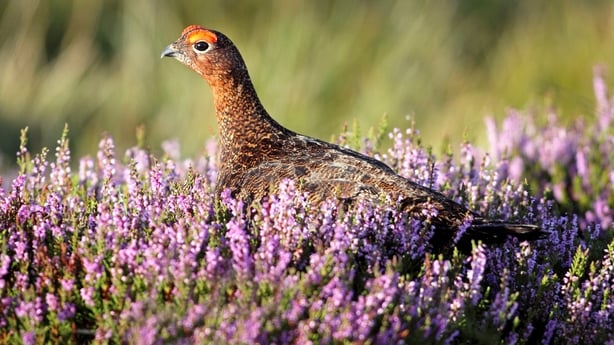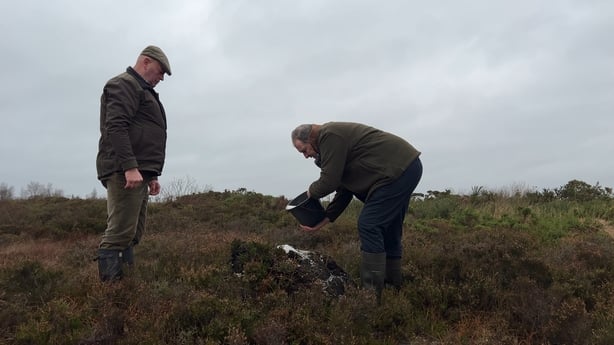A bog project has been hailed as a "superstar" among community-based conservation projects.
The Ballydangan Bog Red Grouse Project, in Co Roscommon, is being held up as a leading example of how to manage raised bogs for Red Grouse and breeding Curlew – both highly threatened birds in Ireland.
Reflecting on the origins of the project in 2009, manager Pat Feehily said: "We had seen a big decline in red grouse on this bog. We would have grown up as young lads here and grouse were fairly plentiful.
"So, we noticed that there was a serious dwindling in them, and we set about seeing if we could do something to stop the full extinction of them."

Eye Ubiquitous/Getty Images)
The Red Grouse was once a familiar sight in heather upland areas in Ireland.
However, the population experienced a 50% decline between the early 1970s and 2008, partly due to changes in land use and habitat loss.
At Ballydangan, community hunters, environmentalists and farmers have worked together to save the local population from being wiped out.
"We set up a committee. With our local CE Scheme, we were given four workers to help us out and Bord na Móna gave us a lease on the bog," Mr Feehily explained.
"We cut the heather. That provides food for the grouse. They like the nice young heather because it's high in protein.
"We have to establish some grit piles as well. It will keep them from moving off the bog to get grit. They use it for digesting their food.
"We have learned a very big amount about grouse and what they like. Even the bog itself - heather, how to cut it. All that had to be learnt."
The 800-hectare restored raised bog is now home to two pairs of red grouse as well as other rare flora and fauna.
Mr Feehily said: "The big wins are chicks on the ground. You can win awards and you can win everything, but it doesn't really matter. What really matters to us is to see a bird with fledglings at the end of the season."

Environmental consultant, David Scallan, said: "Ballydangan is a fabulous story about community-based conservation. It’s the local community.
"The initiative came from the local gun club, as they were really concerned about the loss of grouse in the region which was mainly due to raised bogs being lost.
"It was everyone coming together because we want a future for red grouse. We want our children to see red grouse. Top-down initiatives often don't work, but bottom-up initiatives really do."
David Fallon, who is the project’s ecologist, presented the story of Ballydangan bog at last year's COP26 climate summit in Glasgow, Scotland.
Mr Fallon said: "It can’t be overstated how important Ballydangan bog is. An intact raised bog and a restored raised bog like Ballydangan is much better at storing and sequestering greenhouse gases than an equivalent area of rainforest. In Roscommon, this is our rainforest. There’s 10,000 years of carbon locked in there.
"In Ireland, we have looked at bogs as waste lands over the years, but they’re global superstars. And Ballydangan is a superstar. It’s the mosaic of everything - rare plants, birds and insects."

The National Parks & Wildlife Service (NPWS) has begun a new national Red Grouse Survey to determine numbers in Ireland.
As part of this survey, NPWS and the National Biodiversity Data Centre have teamed up to seek the assistance of recorders to submit sightings.
The last count in 2008 estimated the number of red grouse in the Republic of Ireland at 4,200 birds, with a further 202 pairs in Northern Ireland.
Reflecting on the work carried out to save the local population at Ballydangan, Pat Feehily said: "When you grow up with something and then it starts to disappear you get sentimental, I suppose when you get on in life. And we decided if we could do something, it would be great and we did."







